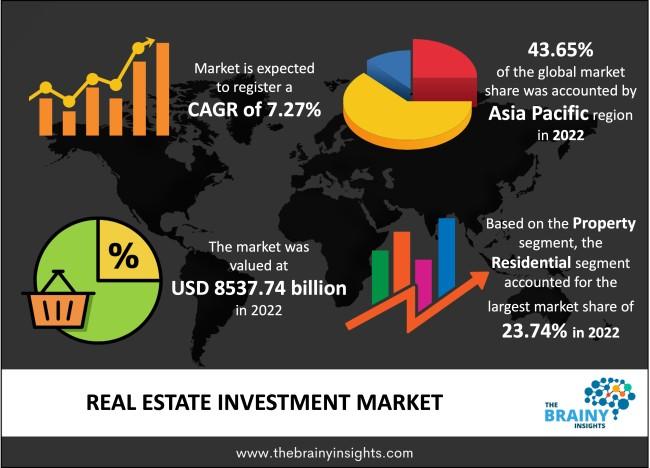Global real estate is undergoing a rapid reset as higher borrowing costs, persistent inflation, and shifting population and work patterns reorder demand from offices to housing. Deal volumes have thinned, valuations are being repriced, and lenders are tightening terms, exposing stark divergences between sectors and regions.
Office markets in several major cities face elevated vacancies, even as logistics facilities, data centers, and multifamily assets attract capital. Housing affordability has deteriorated despite constrained supply, construction costs remain elevated, and climate risks are reshaping underwriting and insurance. Cross‑border investment has slowed amid currency volatility and geopolitical tensions, while policy responses-from rent caps to tax changes-add new variables. This article examines where pressure is building, where resilience is emerging, and what the next phase could mean for investors, tenants, and policymakers.
Table of Contents
- Currency volatility and tighter credit conditions unsettle cross border transactions and price discovery
- Office demand softens while rental housing logistics and data centers post resilient occupancy and rent growth
- Lock in fixed rate debt hedge foreign exchange partner with local operators and prioritize energy efficient assets to protect returns
- In Conclusion
Currency volatility and tighter credit conditions unsettle cross border transactions and price discovery
Foreign-exchange swings, rising hedging costs, and stricter lending standards are slowing deal flow, widening bid-ask spreads, and delaying valuations across gateway cities from London to Singapore; with dollar strength and diverging rate paths amplifying currency basis pressures, borrowers face thinner debt capacity as loan-to-value ratios compress and margins widen, while appraisers grapple with sparse comparables, pulled auctions, and a growing reliance on price chips to bridge expectations-conditions that are pushing capital toward core, shorter-duration income and away from leverage-heavy strategies, even as private credit fills gaps at higher coupons.
- Hedging costs: Three- to twelve-month FX basis and forward points erode yields for overseas buyers, resetting underwriting thresholds.
- Funding spreads: Wider CMBS/covered bond-OIS gaps and bank Tier 2 levels tighten loan supply and raise all-in borrowing costs.
- Bid-ask gap: Sellers anchor to prior peaks; buyers price in cap-rate drift, refinance risk, and covenant headroom, stalling transactions.
- Deal timelines: Longer diligence and syndication periods increase fall-through rates and favor all-cash or club structures.
- Valuation signals: Fewer observable trades, rising appraisal uncertainty, and heavier use of sensitivity bands in models.
Office demand softens while rental housing logistics and data centers post resilient occupancy and rent growth
Leasing pipelines indicate corporates consolidating footprints, extending holdovers, and favoring shorter, flexible terms amid elevated sublease supply and rising concessions; meanwhile, income-oriented segments supported by structural demand-rental housing, logistics, and data centers-continue to report tight availability and positive effective rent growth, aided by limited new supply in key nodes, household formation, omnichannel inventory strategies, and surging compute needs tied to AI; cap-rate spreads are widening between challenged urban office assets and mission-critical residential/industrial/digital infrastructure, and while financing remains selective, stronger pre-leasing and operating cash flows in the latter categories are underpinning valuations.
- Office: Hybrid work and cost control slow net absorption; landlords lean on TI packages and free rent; refinancing risk accelerates asset bifurcation.
- Rental housing: High occupancy with modest lease trade-outs; new deliveries in select metros temper momentum, but retention and collections remain firm.
- Logistics: Demand anchored by reshoring, nearshoring, and last-mile; construction cooling supports rent resilience in supply-constrained, power-proximate submarkets.
- Data centers: Power and land constraints drive pre-leasing; pricing supported by AI/Cloud expansions and scarce ready-to-serve capacity.
Lock in fixed rate debt hedge foreign exchange partner with local operators and prioritize energy efficient assets to protect returns
With interest-rate volatility, currency swings, and tightening sustainability regulations reshaping deal math, investors are moving to fixed-rate debt to stabilize cash flows, aligning FX hedging with projected local-currency income and leaning on local operators to preserve margins, while prioritizing energy-efficient assets to reduce operating costs, secure green financing, and mitigate “brown discount” risk; the combined approach seeks to protect debt service coverage and valuation as cap rates adjust and macro conditions remain fluid.
- Fix the liability stack: Favor term, amortization, and prepayment flexibility; ladder maturities to reduce refinancing cliffs; stress-test DSCR under higher-for-longer scenarios.
- Hedge currency at the cash-flow level: Use natural hedges via local-currency debt, complement with rolling forwards/swaps matched to NOI timing, and manage collateral calls under ISDA/CSA frameworks.
- Leverage on-the-ground execution: Partner with operators who have permitting, leasing, and cost-control track records; align incentives through performance-linked fees and co-investment.
- Prioritize efficiency upgrades: Target audits, building management systems, electrification, heat pumps, and on-site renewables/PPAs to cut OPEX, enhance tenant demand, and access sustainability-linked financing.
- Protect the exit: Embed climate and transition-risk diligence, maintain covenant headroom, and underwrite to conservative cap-rate paths to preserve value across cycles.
In Conclusion
As the cycle turns, the contours of the global property landscape are being redrawn unevenly-by interest-rate paths, refinancing pressures, shifting demand and policy choices that differ city by city. Price discovery is still underway, liquidity remains selective, and performance continues to diverge across sectors, from housing and logistics to offices and retail.
What happens next will hinge on a handful of variables: the trajectory of central bank tightening or cuts, the pace at which debt maturities are worked through, the capacity to add or repurpose supply, and the resilience of tenants amid slowing growth. Climate risk, insurance costs and cross-border capital rules are adding new layers to underwriting, while affordability strains test political resolve.
For investors, developers and households alike, the coming quarters will show whether this repricing produces a sturdier foundation or exposes deeper cracks. Deal volumes, cap rates and construction pipelines will be the early indicators. For now, adaptability-not optimism-remains the market’s most valuable asset.


